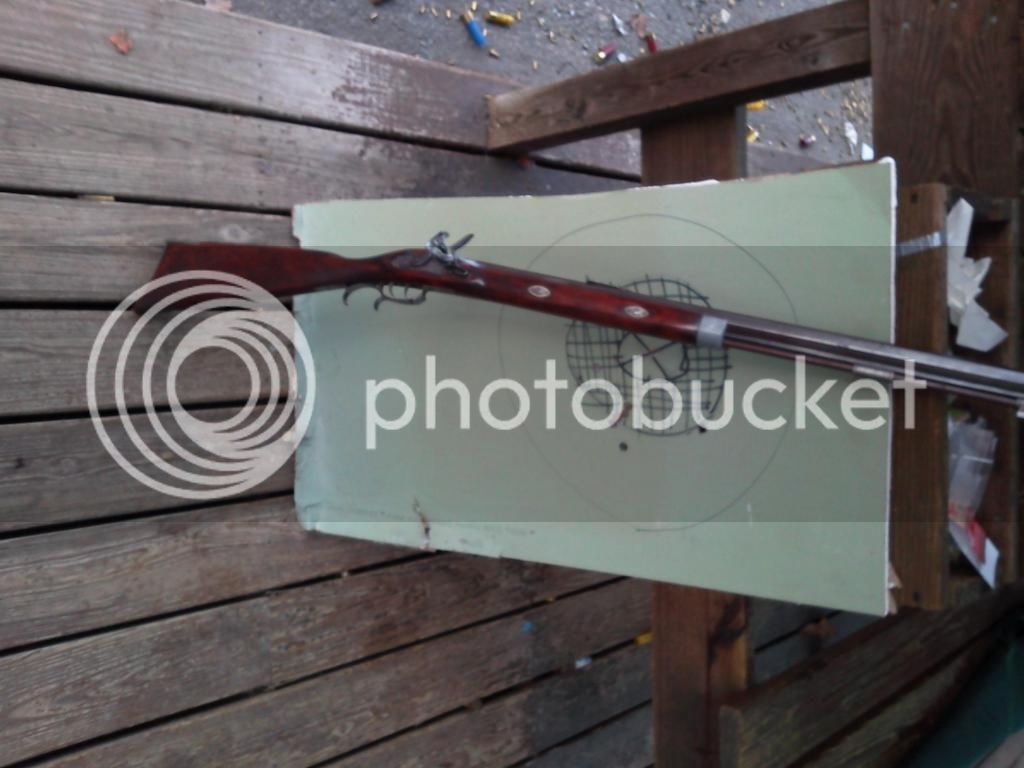Briarhunter
32 Cal.
- Joined
- Nov 20, 2014
- Messages
- 20
- Reaction score
- 0
Hello - my first post.
I picked up a Conneticut Valley Arms, Mountain Rifle in .54 cal.
I took it apart, cleaned it up and shot it yesterday. It has a browned barrel and furniture and a very low serial number. Deos anyone have any information on the rifle?
It shoots very well at 50 yards touching every shot. At 80 yards it spreads out to at least 6 inches. I use 4F to prime and 2F in barrel.
It did not go bang(4 clicks) until I primed the heck out of the pan (almost full). Does the primer powder have to touch the touch hole? I read not to let the primer charge near the touch hole. After 8 shots it seemed to go bang more often even getting three in a row with the pan loaded. I started to pick out the touch hole every shot and brushed the pan. Seemed to help. The touch hole looked to be set back a few millimeters from the pan is this the correct position?
Thanks for any input.
Dave

I picked up a Conneticut Valley Arms, Mountain Rifle in .54 cal.
I took it apart, cleaned it up and shot it yesterday. It has a browned barrel and furniture and a very low serial number. Deos anyone have any information on the rifle?
It shoots very well at 50 yards touching every shot. At 80 yards it spreads out to at least 6 inches. I use 4F to prime and 2F in barrel.
It did not go bang(4 clicks) until I primed the heck out of the pan (almost full). Does the primer powder have to touch the touch hole? I read not to let the primer charge near the touch hole. After 8 shots it seemed to go bang more often even getting three in a row with the pan loaded. I started to pick out the touch hole every shot and brushed the pan. Seemed to help. The touch hole looked to be set back a few millimeters from the pan is this the correct position?
Thanks for any input.
Dave








